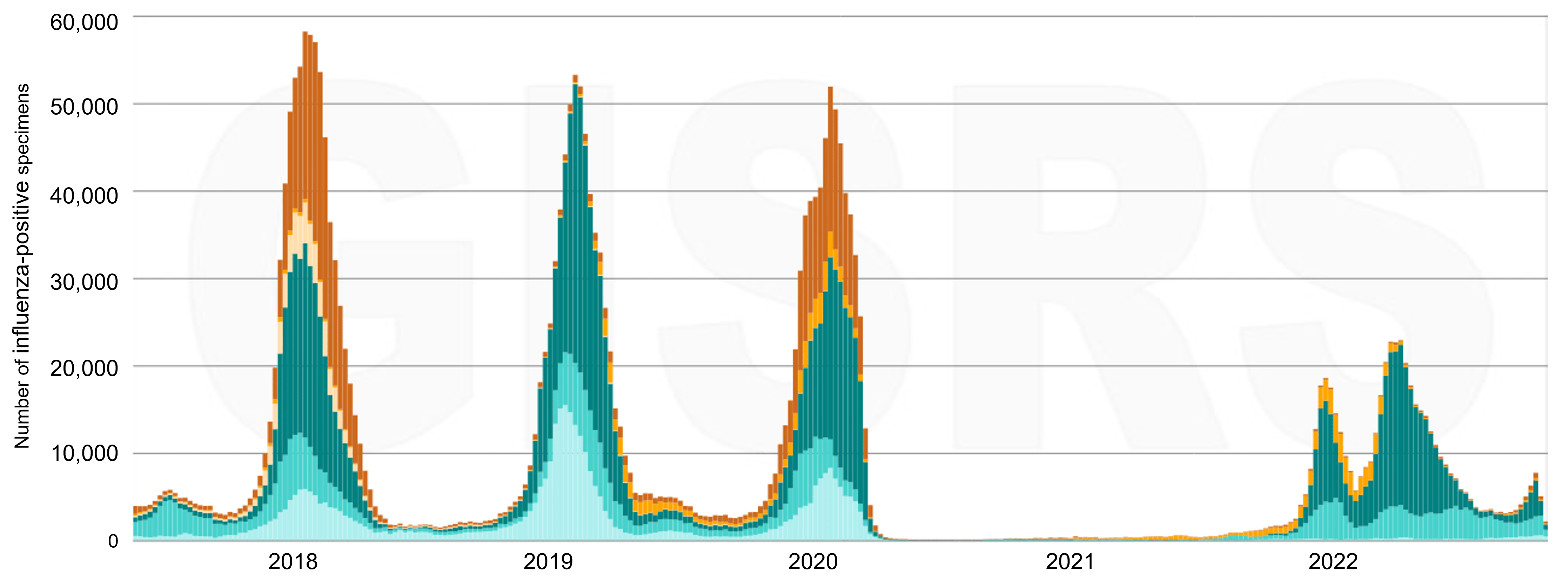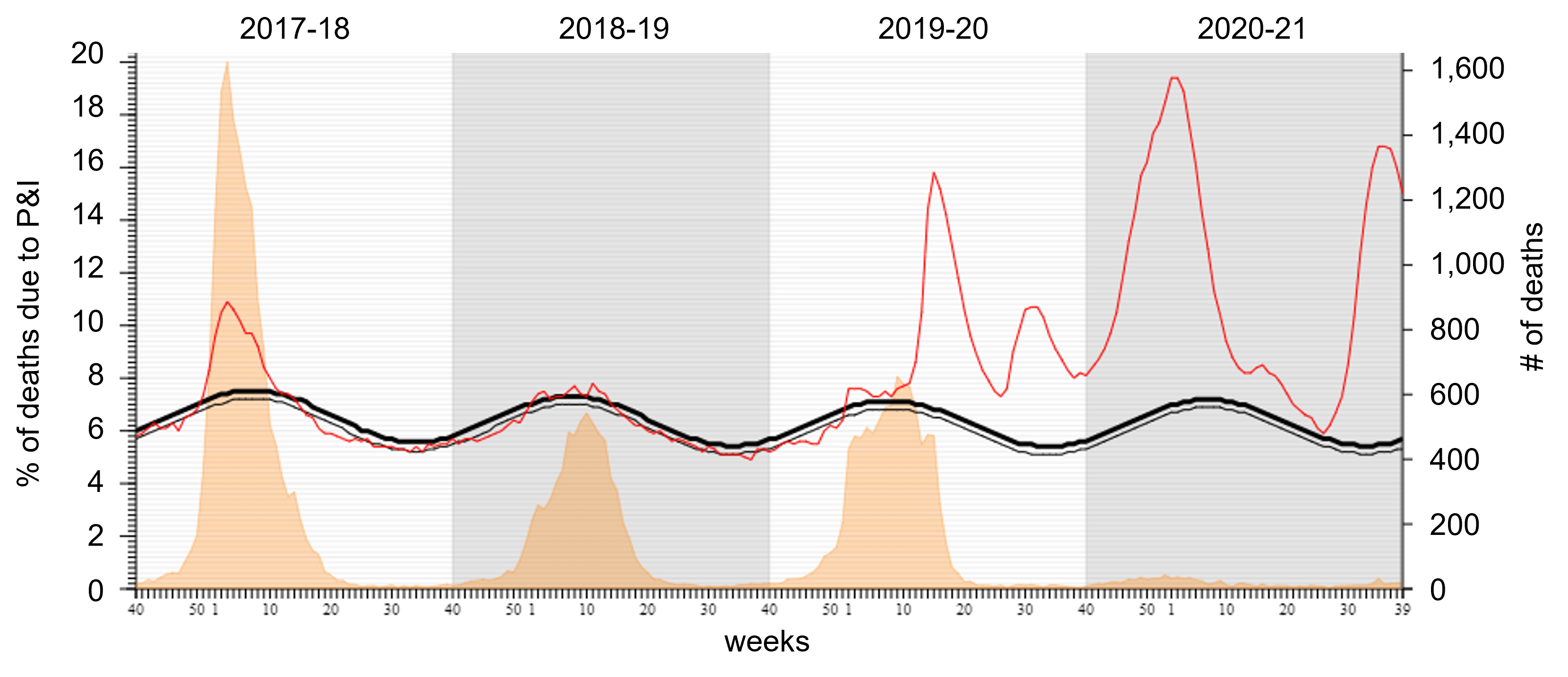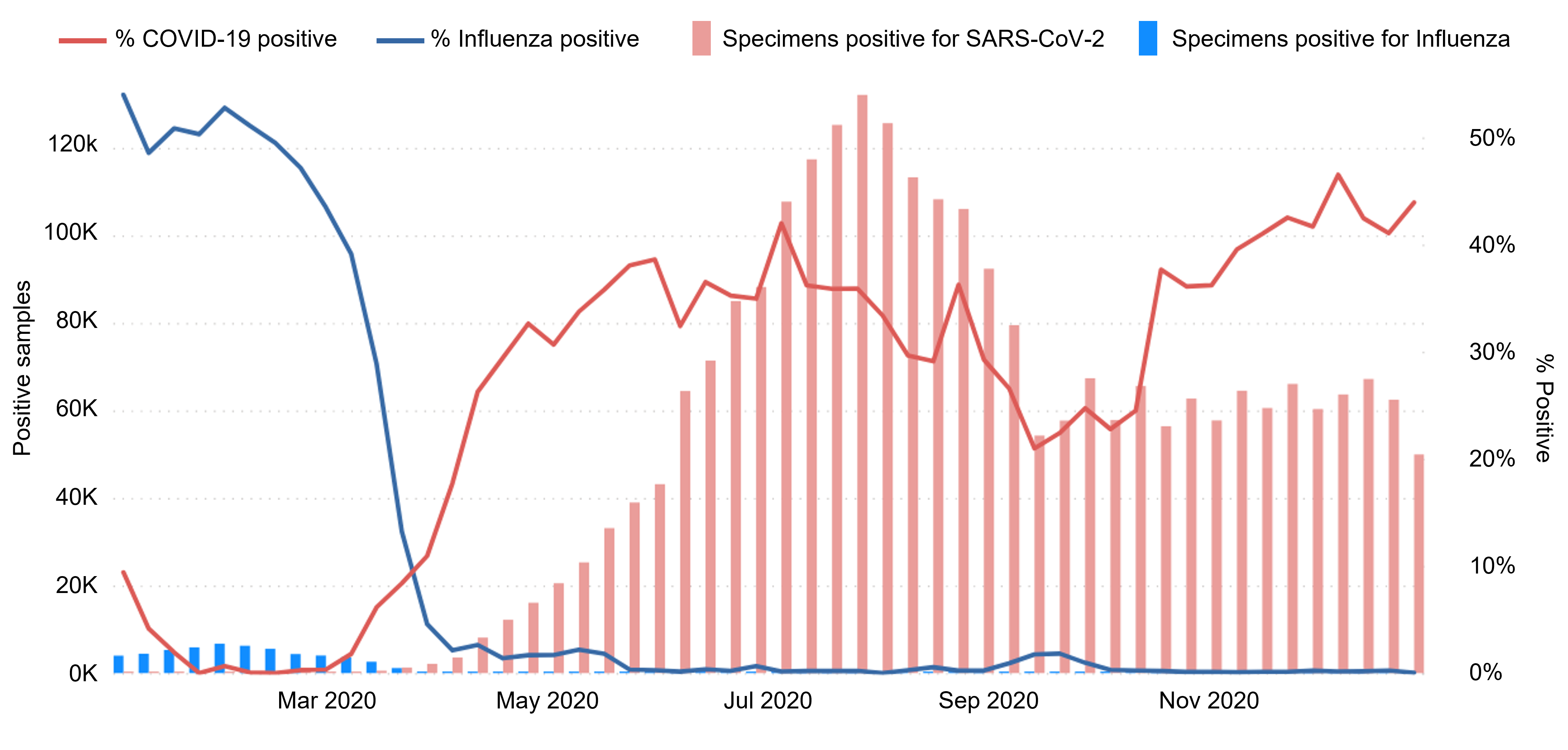
Flawed Reasoning: Millions of excess deaths, or more deaths than expected, were recorded worldwide during the COVID-19 pandemic. If influenza deaths were simply mislabeled as COVID-19 deaths, excess deaths wouldn’t be observed.

FULL CLAIM: "2.9 million people died of Influenza and Pneumonia in 2018 [...] 2.8 million “die of covid” in 2020…it’s really not that hard figure out (sic) what they’ve done."
REVIEW
Since the onset of the COVID-19 pandemic in February 2020, the unfounded narrative that COVID-19 is a hoax or that its severity was exaggerated has persisted on social media, as previous reviews by Health Feedback can attest to.
One iteration of this narrative is that seasonal flu cases have been miscounted as COVID-19 cases, thereby exaggerating the real toll of the COVID-19 pandemic. Here again, Health Feedback showed how this is false and inconsistent with available epidemiological data (see here, and here).
This claim resurfaced in November 2022 when social media users shared a screenshot of a tweet originally posted in April 2022, claiming that “2.9 million people died of influenza and pneumonia” in 2018 and that 2020 saw “2.8 million [dying] of COVID” while there was a “98% decline in influenza cases” in the same year. The tweet concluded by saying that “it’s really not hard figure out (sic) what they’ve done”.
These statements taken together clearly suggested that COVID-19 deaths were actually caused by the flu. However, this claim is inaccurate and inconsistent with scientific evidence, as we will show below.
To begin with, the claim didn’t provide a source for the numbers it used. Furthermore, they aren’t logical. Pneumonia is an infection of the lower respiratory system that can be caused by many bacteria and viruses, including the influenza virus and SARS-CoV-2, the virus responsible for COVID-19. It would have made more sense to compare instead the change in influenza mortality between 2018 and 2020 to the increase in COVID-19 mortality in 2020.
It’s true the number of reported influenza cases did significantly reduce between 2018 and 2020. Figure 1 shows the number of laboratory-confirmed influenza cases worldwide, according to the World Health Organization (WHO). The 2019 – 2020 flu season, which had begun in a similar fashion as previous seasons, came to an abrupt end at the beginning of March 2020.

Figure 1 – Number of laboratory-confirmed cases of influenza globally. The different colors correspond to different strains of influenza. Note the sharp decrease in detected cases at the end of the 2019-2020 flu season and the quasi-absence of cases during the 2020-2021 flu season. Source: WHO.
Figure 1 shows that flu almost disappeared for the rest of 2020 and the first half of 2021. This wasn’t due to a lack of specimen testing for influenza as a 2021 WHO review of global flu circulation in the 2020 – 2021 season explained that the testing activity was barely affected by the COVID-19 pandemic. This means that the reduction in flu cases isn’t because people with flu were tested less often, but suggests a genuine decrease in infection.
While WHO worldwide data don’t report flu mortality, it is highly likely that such a drastic reduction in cases would also result in greatly reduced mortality. And U.S. epidemiological surveillance data supports this, as it showed that markedly fewer influenza-associated deaths were registered in the 2020 – 2021 flu season (Figure 2).

Figure 2 – Influenza mortality in the U.S. In orange, plotted on the right axis, the number of deaths where the death certificate lists influenza as the cause of death. The red line represents the proportion of all deaths in the country that are due to pneumonia and influenza. The black lines are the epidemiological thresholds representing the proportion of deaths from all causes that are expected to be due to pneumonia and influenza. Source: CDC.
However, the reduction in influenza cases doesn’t demonstrate that COVID-19 mortality has been inflated by deaths actually caused by the flu.
First, influenza and COVID-19 are two diseases caused by completely different viruses, with different genetic information, and diagnostic tests are perfectly able to distinguish between them. The virus responsible for COVID-19 is SARS-CoV-2[1], belonging to the virus family named Coronaviridae. SARS-CoV-1, which was responsible for the 2003-2005 SARS outbreaks, also belongs to the same family.
On the other hand, flu is caused by viruses belonging to the virus family Orthomyxoviridae. This demonstrates that SARS-CoV-2 is not a strain of influenza and COVID-19 is not a type of flu.
Although both COVID-19 and the flu are respiratory diseases that share some common symptoms, laboratory-confirmed cases rely on specific molecular tests such as the PCR tests that are highly specific to one virus, as Health Feedback previously explained.
Therefore, if an influenza PCR diagnostic test returns a negative result, it indicates that the specimen doesn’t contain the influenza virus. If a patient tests positive for COVID-19, it means that they are infected by SARS-CoV-2, and not by the flu virus since a COVID-19 PCR test doesn’t detect the flu virus.
WHO data indicated that the proportion of diagnostic tests positive for influenza diminished in the course of 2020 as the proportion of tests positive for SARS-CoV-2 rose (Figure 3). At first glance, this may look like supporting evidence for the claim. However, since diagnostic tests are highly specific to a particular virus, the change in positive tests for flu means that the spread of the flu virus was greatly limited in contrast to SARS-CoV-2.

Figure 3 – Detection of influenza and COVID-19 cases globally. The blue line indicates the proportion of influenza diagnostic tests that returned a positive result. The blue bars represent the number of detected influenza cases. The red line represents the proportion of COVID-19 diagnostic tests that returned a positive result. The red bars represent the number of detected COVID-19 cases. Source: WHO.
Second, mortality data showed that COVID-19 is a new cause of death, independent of seasonal flu. If COVID-19 were merely a new name for the flu, we should observe a similar mortality trend in 2020 compared to the past years. However, this isn’t what happened. Health authorities registered more than two million COVID-19 deaths worldwide by the end of 2020. This is much higher than the 294,000 to 518,000 influenza deaths that occur globally in a normal year, according to the Global Influenza Mortality Research project.
Another way to analyze mortality in 2020 is to look at the excess deaths from all causes. Excess mortality is defined as the number of deaths exceeding what would normally be expected based on the previous years. The world has registered an estimated 16.8 to 28.2 million excess deaths from all causes since 2020, according to a The Economist model, and this phenomenon is still ongoing in 2022. The same model estimated between 3.7 and 6.4 million excess deaths by the end of 2020. Again, if COVID-19 were just another name for the flu, we wouldn’t observe excess mortality.
Therefore, mortality data directly contradict the claim and show that COVID-19 is a cause of death independent from influenza.
What, then, could explain the unusually low number of influenza cases and deaths during the 2020-2021 influenza season? Since COVID-19 and the flu are infectious respiratory diseases and both can be transmitted through respiratory droplets, it’s logical to infer that measures taken to prevent the spread of COVID-19 also limited the circulation of the flu virus.
The onset of the COVID-19 led many countries to take a series of measures aimed at limiting the spread of COVID-19, including mask-wearing, physical distancing, lockdowns, and restrictions on domestic and international travel. In its review, the WHO considers that it is plausible that all these measures actively limited the risks of propagation of influenza.
Supporting these conclusions is the observation that the influenza virus’ circulation decreased after the onset of non-pharmaceutical interventions (NPIs) aiming at reducing SARS-CoV-2 infection[2,3,4].
Importantly, researchers also observed a reduction in other respiratory infections, such as the respiratory syncytial virus[5,6]. This reinforces the hypothesis that the lower number of influenza cases is actually part of a wider phenomenon in which less respiratory diseases spread due to global preventive measures.
In summary, the 2020 – 2021 flu season did indeed see much fewer flu cases and deaths compared to the previous years. However, this isn’t because flu cases were mislabeled as COVID-19 cases, contrary to the claim in viral social media posts. Instead, NPIs, such as travel restrictions and physical distancing, were one likely explanation for the sharp fall in flu cases. This is because NPIs aimed at reducing the spread of COVID-19 also limit the spread of other respiratory infectious diseases, including influenza. COVID-19 is a different disease from the flu that is caused by a coronavirus, not the flu virus, and is responsible for millions more deaths than expected during the pandemic.
REFERENCES
- 1 – Coronaviridae Study Group of the International Committee on Taxonomy of Viruses. The species (2020) Severe acute respiratory syndrome-related coronavirus: classifying 2019-nCoV and naming it SARS-CoV-2. Nature microbiology.
- 2 – Groves et al. (2021) The impact of the COVID-19 pandemic on influenza, respiratory syncytial virus, and other seasonal respiratory virus circulation in Canada: A population-based study. The Lancet Regional Health – Americas.
- 3 – Doroshenko et al. (2021) Decline of Influenza and Respiratory Viruses With COVID-19 Public Health Measures: Alberta, Canada. Mayo Clinic Proceeding.
- 4 – Chan et al. (2020) Positive impact of measures against COVID-19 on reducing influenza in the Northern Hemisphere. Journal of Travel Medicine.
- 5 – Lee & Lin (2020) Effects of COVID-19 Prevention Measures on Other Common Infections, Taiwan. Emerging Infectious Disease.
- 6 – Olsen et al. (2021) Changes in Influenza and Other Respiratory Virus Activity During the COVID-19 Pandemic – United States, 2020-2021. Morbidity and Mortality Weekly Report.


